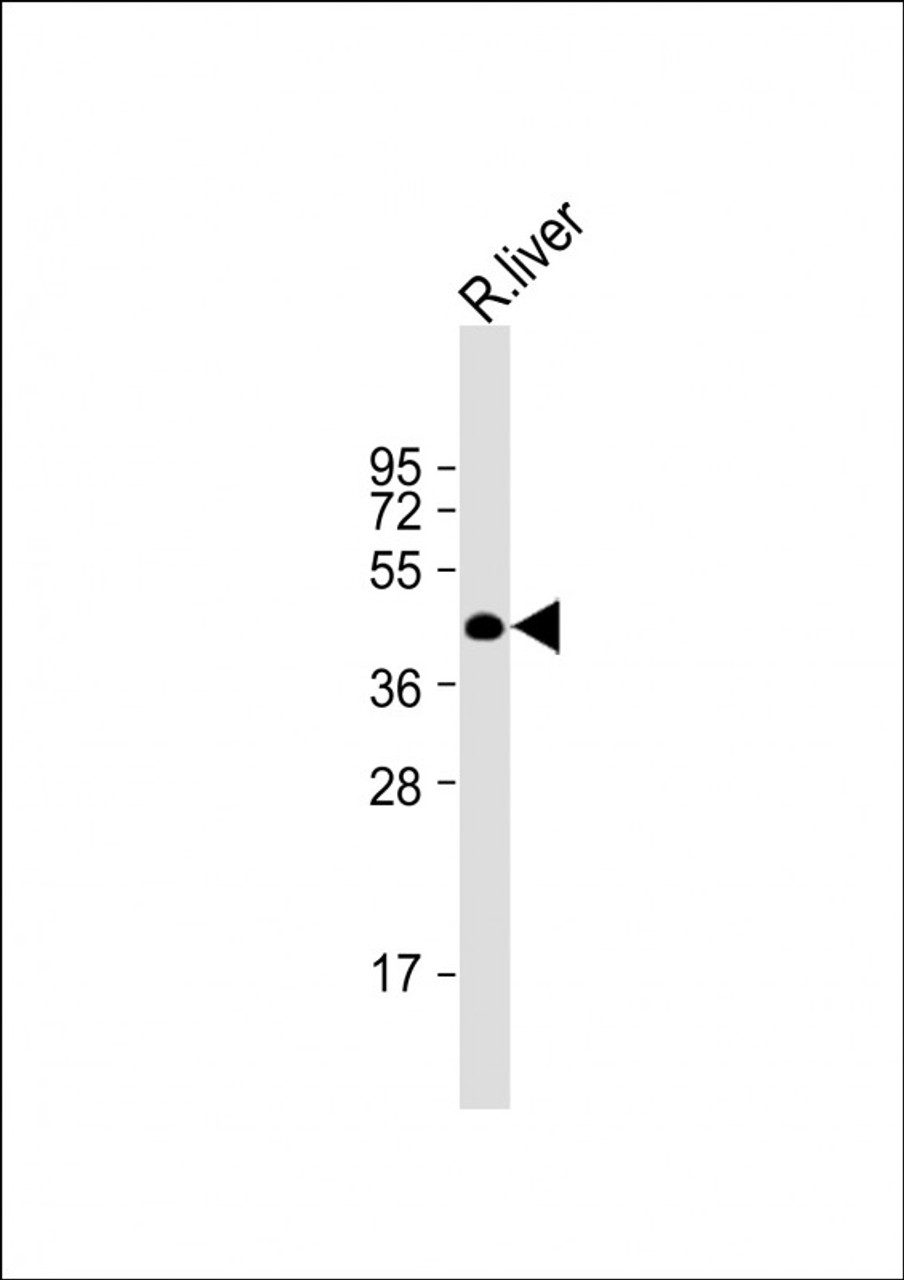Product Description
BAAT Antibody | 61-279 | ProSci
Host: Rabbit
Reactivity: Rat
Homology: N/A
Immunogen: This BAAT antibody is generated from a rabbit immunized with a KLH conjugated synthetic peptide between 63-95 amino acids from human BAAT.
Research Area: Cancer, Obesity, Signal Transduction
Tested Application: WB
Application: For WB starting dilution is: 1:2000
Specificiy: N/A
Positive Control 1: N/A
Positive Control 2: N/A
Positive Control 3: N/A
Positive Control 4: N/A
Positive Control 5: N/A
Positive Control 6: N/A
Molecular Weight: 46 kDa
Validation: N/A
Isoform: N/A
Purification: This antibody is purified through a protein A column, followed by peptide affinity purification.
Clonality: polyclonal
Clone: N/A
Isotype: Rabbit Ig
Conjugate: Unconjugated
Physical State: Liquid
Buffer: Supplied in PBS with 0.09% (W/V) sodium azide.
Concentration: batch dependent
Storage Condition: Store at 4˚C for three months and -20˚C, stable for up to one year. As with all antibodies care should be taken to avoid repeated freeze thaw cycles. Antibodies should not be exposed to prolonged high temperatures.
Alternate Name: Bile acid-CoA:amino acid N-acyltransferase, BACAT, BAT, 2.3.1.65, Glycine N-choloyltransferase, Long-chain fatty-acyl-CoA hydrolase, 3.1.2.2, BAAT
User Note: Optimal dilutions for each application to be determined by the researcher.
BACKGROUND: Involved in bile acid metabolism. In liver hepatocytes catalyzes the second step in the conjugation of C24 bile acids (choloneates) to glycine and taurine before excretion into bile canaliculi. The major components of bile are cholic acid and chenodeoxycholic acid. In a first step the bile acids are converted to an acyl-CoA thioester, either in peroxisomes (primary bile acids deriving from the cholesterol pathway) , or cytoplasmic at the endoplasmic reticulum (secondary bile acids) . May catalyze the conjugation of primary or secondary bile acids, or both. The conjugation increases the detergent properties of bile acids in the intestine, which facilitates lipid and fat-soluble vitamin absorption. In turn, bile acids are deconjugated by bacteria in the intestine and are recycled back to the liver for reconjugation (secondary bile acids) . May also act as an acyl-CoA thioesterase that regulates intracellular levels of free fatty acids. In vitro, catalyzes the hydrolysis of long- and very long-chain saturated acyl-CoAs to the free fatty acid and coenzyme A (CoASH) , and conjugates glycine to these acyl-CoAs.
 Euro
Euro
 USD
USD
 British Pound
British Pound
 NULL
NULL










